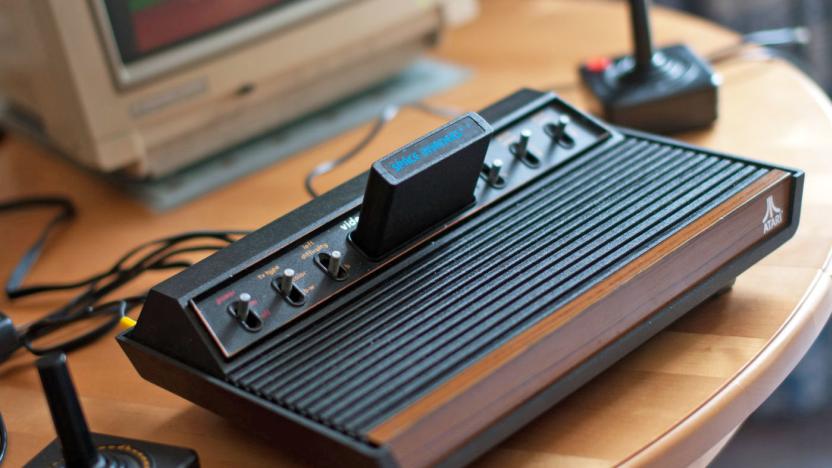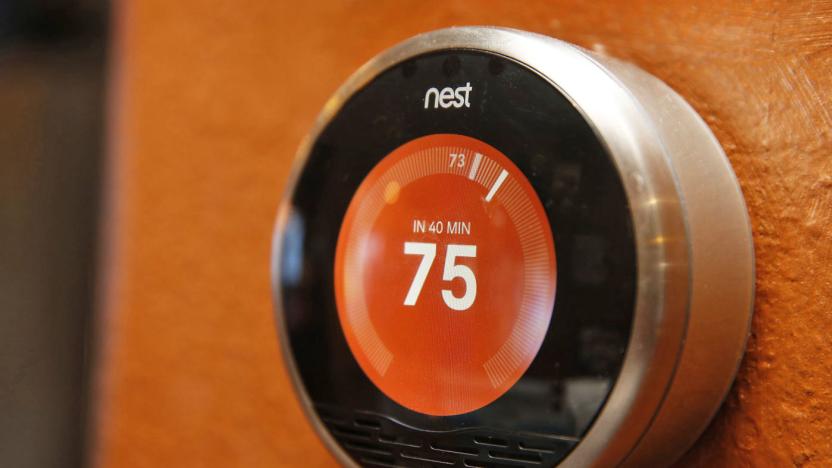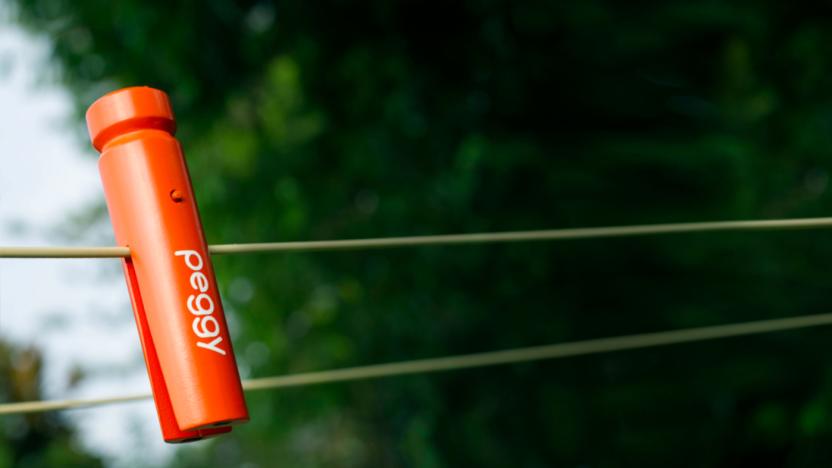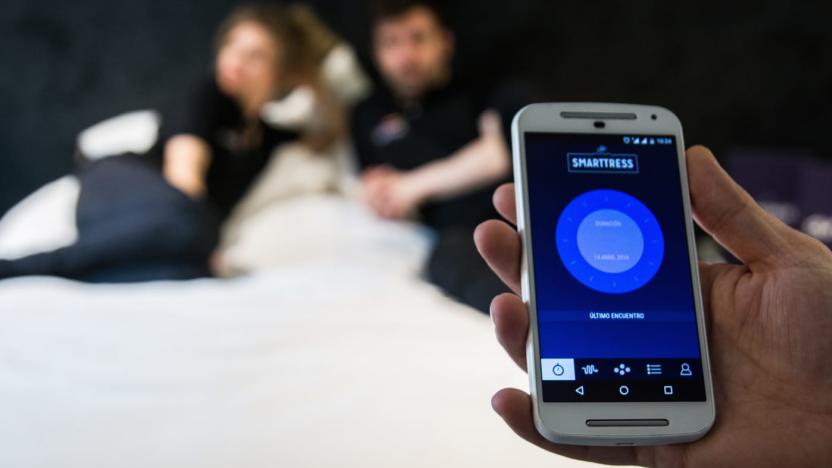InternetOfThings
Latest

ICYMI: Area man gets robo-legs and scientists invent brain dust
try{document.getElementById("aol-cms-player-1").style.display="none";}catch(e){}Today on In Case You Missed It: Ohio resident Lee Raisor lost all four of his limbs in an industrial accident 30 years ago but today is the proud new owner of a pair of robot legs. Just look at him go! We also take a look at UC Berkeley's newest invention: tiny, implantable computers capable of monitoring and controlling future prosthetics from inside your skull. They're calling it "neural dust". And finally, it's Saturday so here are all the headlines you missed from earlier this week presented in rapid-fire fashion. We recommend reading up on Facebook trying to remove clickbait from the site. As always, please share any interesting tech or science videos you find by using the #ICYMI hashtag on Twitter for @mskerryd.

Democrats wants to balance liberty and security in encryption debate
In 2012, the Democratic party platform document (released every four years at the Democratic National Convention) made barely a mention of internet privacy and how it affects US citizens. But that was before Edward Snowden's revelations. This year, as the DNC kicks off in Philadelphia, the new Democratic Party platform addresses the privacy concerns brought to light in 2013. It also gets into the recent battle over encryption that was highlighted by the FBI trying to force Apple to decrypt an iPhone connected to a murder suspect.

Republican party embraces next-gen wireless and IoT
In 2012 the GOP's official platform didn't say much about broadband. In fact, in the 62-page, roughly 30,000-word document detailing the party's various policy stances, the word "broadband" only appeared once. In 2016, things are a little different. The platform dedicates far more space to talk of expanding internet access. It even calls for reforms that would help the Internet of Things "thrive."

Lizard Squad hacked thousands of cameras to attack websites
The hacking collective Lizard Squad isn't relying solely on masses of compromised PCs to cause some grief online. Security researchers at Arbor Networks have discovered that the outfit compromised several thousand closed-circuit cameras and webcams to create a botnet that it promptly used for denial of service attacks against bank, gaming sites, governments and internet providers. Each device might not be as individually powerful as a PC, but they add up -- some attacks flooded sites with as much as 400Gbps of data.

There's a connected hearing aid, and it actually sounds useful
With every new gadget seemingly connected to the internet to automate your life, the question arises if a lot of those items are really useful. Now there's a hearing aid that connects to the Internet of Things, and before you dismiss it, this device seems like it will definitely lend a hand. London-based Oticon announced the Opn: a connected hearing aid that ensures the user knows when someone rings the doorbell, the smoke detector goes off or a baby monitor is chiming. Thanks to TwinLink technology, the Opn doesn't sacrifice size or battery life for connectivity.

Roost's smart water detector monitors your home's wet spots
Although less flashy than some of their connected home competitors, Roost's smart smoke alarms and smoke detector batteries are genuinely useful (and economical) pieces of a connected home. Now, for their next product, the company wants to protect your home from water damage as well.

Samsung pours $1.2 billion into the Internet of Things
Samsung is willing to put its money where its mouth is when it comes to the Internet of Things. The electronics giant is spending $1.2 billion on IoT development in the US over the next 4 years, sharing it between startups and its own work. This isn't just about getting into a young field, if you ask Samsung. The company pitches this as crucial to dealing with an aging population -- connected gadgets could help an older generation maintain its independence.

Samsung will take on Google and Amazon in the cloud
Cloud computing! Doesn't the mere mention of it just get your blood pumping? Okay, it might be dull, but we all depend on those data centers for CPU-intensive services like Google Now and Siri, storage for photos, documents and video, and infinitely more. So, it's big news that Samsung has acquired Joyent, a US-based cloud platform, for an undisclosed sum. The company will be able to power its mobile apps, internet-of-things (IoT) business and storage, and possibly break into artificial intelligence (AI), an area dominated by Google, IBM's Watson and others.

The Internet of Things is coming to your hydroponic garden
It was only a matter of time. The Internet of Things has already come for our vaporizers; now it is back for our hydroponic grow ops. Behold the Gro.io, an all-inclusive hydro system that's nearly fully automated. The brains behind this system is the Gro.hub. This central computing tower runs an embedded Linux OS on a 1GHz ARM Cortex-A8 Processor and processes signals from ten separate remote sensors. These monitor things like water temperature, level, pH and flow.

Apple needed to make a standalone HomeKit app
HomeKit, Apple's platform for the Internet of Things, was introduced in 2014. Last year, hardware makers finally started selling devices with companion apps that supported the architecture. But the one thing missing from that platform was an accompanying app built by Apple. Instead, the company decided to let developers take care of that. Apple set up the framework and third parties were supposed to build a beautiful front end around it. But it didn't quite happen that way.

The NSA wants to spy on the Internet of Things
We already know the National Security Agency is all up in our data, but the agency is reportedly looking into how it can gather even more foreign intelligence information from internet-connected devices ranging from thermostats to pacemakers. Speaking at a military technology conference in Washington D.C. on Friday, NSA deputy director Richard Ledgett said the agency is "looking at it sort of theoretically from a research point of view right now." The Intercept reports Ledgett was quick to point out that there are easier ways to keep track of terrorists and spies than to tap into any medical devices they might have, but did confirm that it was an area of interest.

Target has an in-store space for explaining the smart home
Last year Target unveiled its Internet of Things "Open House" experiment in San Francisco. The goal was to create a shopping experience that would help customers figure out how connected devices work with each other. In the confusing and fragmented world of IoT, the retailer carved out a little corner of knowledge. Now it's moving past the testing phase and opening a "connected living experience" in a suburban Minneapolis store.

Atari returns to hardware with smart home gadgets
Classic video game brand Atari has announced it's making new hardware, but sadly it's not a new console. Instead, it's making connected home and smart devices. There aren't many details about exactly what new gadgets they'll make, but they will range from "simple" to "highly sophisticated," and will be in the home, pets, lifestyle and safety categories. The company also says the new gear is a result of a partnership with Sigfox -- the same company behind the connected Antarctic research base. Sigfox's IoT technology will provide instant the connectivity and the promise of extra long battery life.

Nest opens the networking code for its smart home devices
Nest already has a bunch of companies lined up to use its Thread network protocol in their devices (over 30 submitted right now), but it's not content with what's on deck. The Alphabet-owned company has created an open source version, OpenThread, that lets anyone implement the smart home-oriented technology in their connected gadgets. In theory, it doesn't take much work -- Thread is already an IPv6 protocol, so any device that handles the 802.15.4 standard (used for low-rate personal networks) should only need a few tweaks to play nicely.

Microsoft buys a company enabling the Internet of Things
If it wasn't already evident that Microsoft is serious about becoming a big player in the Internet of Things, it is now. The tech pioneer has bought Solair, a company focused on Internet of Things services for businesses -- say, making sure that factory machines are running smoothly. Microsoft isn't divulging exact plans yet, but it expects to fold Solair's tech into Azure's IoT Suite. You may not witness the fruits of this acquisition first-hand, but don't be surprised if the gadgets you buy arrive sooner and with fewer flaws.

Otto is Samsung's cute personal assistant robot
Samsung unveiled a big new push into Internet of Things at its developer conference today, and it's using a cute little robot to demonstrate it. It's called the Otto, a reference design for what is essentially an Amazon Echo clone. It has microphones and speakers so it can answer questions like "What's the weather?," plus you can use it to control various connected gadgets in your home like light switches and refrigerators.

Intel explains its strategy for moving beyond the PC
When Intel slashed thousands of jobs as part of its big attempt to expand beyond the PC, it left a lot of people wondering: just what is this strategy, and why is it so vital? As of today, you have a better (if imperfect) explanation. CEO Brian Krzanich has outlined that strategy in a lengthy editorial. He believes that the cloud is the most important thing forming the "smart, connected world," and that everything revolves around it. That means fostering 5G data access, connecting the internet of things and pushing for technology that improves computing power in devices and data centers, such as ever-denser processors and extra-fast 3D memory.

Yes, someone made a smart clothes peg
It seems nothing is safe from the Internet of Things revolution. The latest attempt to make a household object smarter is Peggy, a connected clothes peg by Australian detergent brand OMO. A few basic components sit inside its orange shell, including a thermometer, UV sensor and humidity detector. These track the weather outside and, in the case of impending rain, trigger timely alerts to your phone over WiFi. So if the clouds roll in and you're busy with something else -- maybe you're out of the house, but someone else is indoors -- you won't be left with soggy washing.

Track all your partner's infidelities with this smart mattress
Having failed at marketing their internet-connected mattress for babies, Spanish company Durmet has flipped the pillow talk on their WiFi-enabled "Smarttress." The device now comes in an adult-sized version with what Durmet sees as its newest killer feature: a "Lover Detection System" that will buzz your phone every time it detects suspicious activity.

Intel loses execs managing PCs and the Internet of Things
Intel has had its fair share of high-profile departures as of late (most notably the iconic Mooly Eden, who left last year), and they don't appear to be stopping any time soon. Senior VP Kirk Skaugen, the head of Intel's Client Computing (aka PC) division, is leaving the company for his "next career opportunity." He'll finish on April 8th, and will be replaced by mobile client VP Navin Shenoy. Meanwhile, Internet of Things group manager Doug Davis is retiring at the end of 2016. There's no named replacement yet, but Davis will stick around until someone can fill his shoes.









